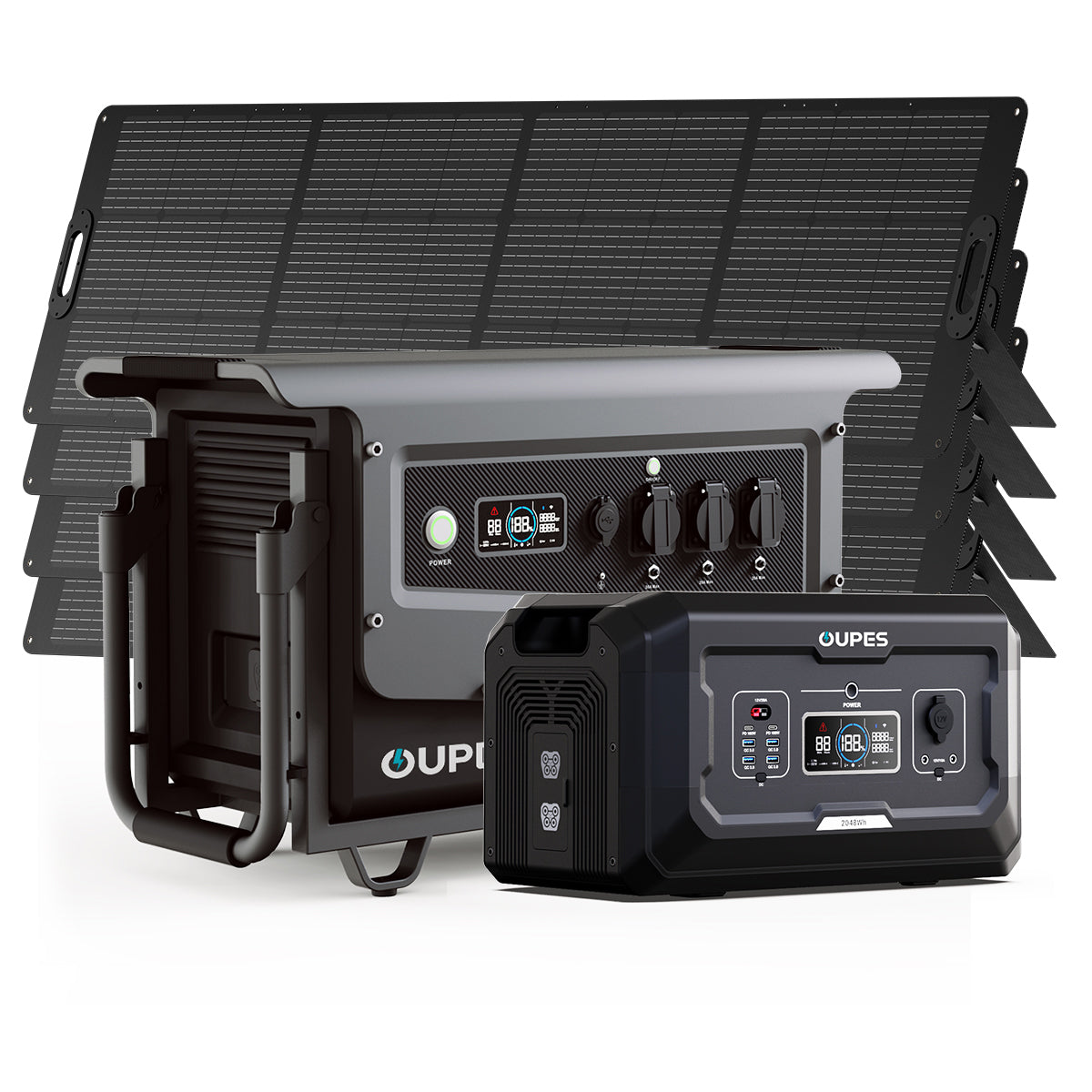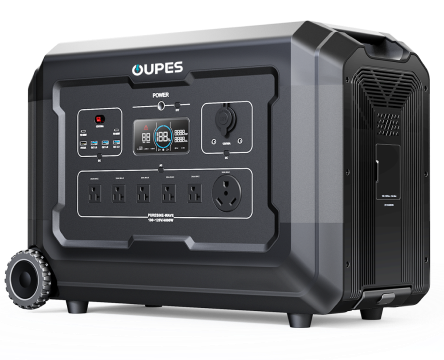
Imagine the lights never going off, even when the grid does. A robust solar battery backup system can keep your essential appliances running, your home secure, and your peace of mind intact. With new technologies emerging and incentives available, now may be the ideal time to explore solar + backup solutions for your household.
In this guide, we'll walk you through everything you need to know about choosing a home-ready solar battery backup system. From capacity planning and battery chemistry to inverter performance, installation considerations, and long-term maintenance, this article gives you the insight to make an informed decision.
Understanding Your Backup Power Needs and System Sizing
Before diving into product types, the first consideration is determining how much energy your home truly needs during an outage. Identify the essential loads: refrigerating food, maintaining medical devices, powering lights, or running heating/cooling systems. Calculate each item's power draw in watts and estimate run-time needs in hours. Multiply to find energy requirements in watt-hours (Wh).
For example, if your refrigerator uses 150 W and runs 10 hours a day, that’s 1,500 Wh. Add lighting, communication equipment, fans, and medical devices to reach your total daily energy draw. A small essential-only backup may be 3–5 kWh, while full-home coverage often requires 10–20 kWh or more.
Battery capacity must match these requirements, plus a safety buffer. Oversizing helps handle cloudy days and reduces battery stress, increasing lifespan. Also factor in inverter sizing: your system’s inverter must handle startup surge loads. For example, if your water heater or furnace blower kicks on, your inverter should exceed the surge wattage—ideally by 20–50%—to avoid overload.
Other considerations include how many days you want to stay off-grid and whether you have solar panels to recharge the batteries. Using solar can drastically reduce how many kWh you need onboard, since daylight can top off your system daily—turning a large, expensive battery-only setup into a more efficient hybrid option.
Battery Chemistry: Lifespan, Safety, and Long-Term Value
Battery chemistry selection determines cost, performance, lifespan, and safety. Two common options dominate home backup systems: lithium-based batteries (especially lithium iron phosphate, LiFePO₄) and alternative chemistries like lead-acid or nano lithium. Each has trade-offs.
LiFePO₄ batteries offer high cycle life—often 3,000–5,000 full cycles—and retain most of their capacity over time. They are thermally stable and safe, which makes them ideal for indoor home use. However, they cost more upfront compared to lead-acid.
Lead-acid batteries are cheaper but have much shorter longevity (300–800 cycles) and lower usable depth-of-discharge (typically 50%). They also require regular monitoring and maintenance, and they are larger and heavier. Nano lithium or other chemistries are emerging, blending low-cost with high cycle life, but their long-term reliability is still evolving.
Regardless of chemistry, battery management systems (BMS) are crucial. A good BMS protects against overcharge, over-discharge, overheating, and cell imbalance—ensuring your system operates safely and lasts as long as possible. Look for systems with built-in BMS and strong manufacturer warranties (at least 10 years or cycle guarantees) to ensure lasting performance.
Inverter and System Architecture: AC vs. DC Coupling
The inverter system is the heart of any backup setup. It converts stored DC battery power into usable AC electricity for your home. In addition, hybrid inverters can accept both solar input and generator or grid power—prioritizing solar and battery, while keeping the system ready in case of grid failure.
Two main architecture styles exist—AC-coupled systems and DC-coupled ones. AC-coupled systems use a separate grid-tied solar inverter and a battery backup inverter that deals with battery charging and power conversion. DC-coupled systems integrate solar and battery inputs into one hybrid inverter. Each approach has advantages.
AC coupling is often easier to retrofit into existing systems. If you already have solar panels, adding a battery backup inverter to your current array can be simpler and cheaper. DC coupling may yield slightly higher overall efficiency by reducing power conversions, and it usually handles charging logic better in new installations.
Look for hybrid inverters with seamless transfer-switch functionality, so that backup power kicks in without interruption when the grid fails. Also, consider bidirectional capabilities—allowing both charge and discharge management—as well as smart monitoring features that let you track performance via apps or local UI.
Installation, Permitting, and Future Expandability
Proper installation is essential for reliability and safety. Certified electricians need to wire the system, install transfer switches, and comply with electric utility interconnection codes. Permits, inspections, and possible HOA rules may apply depending on your location.
Placement of battery units matters: they should be housed in sheltered, temperature-controlled spaces (garage, utility room, or inside walls), with proper ventilation. Panels are typically mounted on roofs or ground racks, angled correctly, and electrically grounded.
Think about future expansion. Modular systems allow adding more battery units or panels as your household needs grow—or in response to climbing energy usage. Even if you begin with essential backup only, planning the cabinet space, wiring paths, and inverter capacity can save headaches later if you choose to scale.
Additionally, consider integrating optional components like a backup generator transfer switch, dedicated critical loads panel, or EV charging interface. These extras may add upfront cost, but they provide flexibility and allow your system to evolve with your home’s energy profile.
Cost Analysis, Incentives, and Long-Term Maintenance
Whole-home backup systems are an investment, but incentives and long-term value can offset upfront costs. Typical installed costs range from $15,000 for essential load systems to over $50,000 for full-house options. Adding solar panels raises equity through electricity savings and grid independence.
Maintenance is minimal: LiFePO₄ batteries require little more than occasional visual inspection and system monitoring. Generators (if integrated) will need annual servicing. Warranties vary—battery banks often come with 10-year guarantees or capacity retention promises, while inverters might have 5–10 years. Factor in the replacement or expansion cost over time.
Incentives like the federal investment tax credit (ITC) cover 30% of solar and battery costs in many regions. Some states and utilities offer additional rebates or time-of-use rate benefits that favor battery-backed solar setups. Over time, many homeowners recoup their investment through reduced electricity bills and avoided outage costs.
Long-term resilience is sometimes the most impactful benefit: peace of mind during hurricanes, storms, or grid instability. For many, that guarantee of power during critical moments amplifies system value beyond dollar-per-kWh calculations.
Conclusion
Choosing the best solar battery backup system for your home is a multi-step journey: understanding your energy needs, selecting the right battery chemistry, wiring the inverter appropriately, ensuring proper installation, and planning for growth. Balancing cost against performance, longevity, safety, and resilience ensures you get a system that truly matches your goals.
When configured with accurate sizing, safe installation, robust components, and future-ready architecture, a solar battery backup system delivers more than just power—it delivers confidence and independence during outages, utility instability, and rising energy costs. With thoughtful planning, you can build a reliable, long-lasting system that keeps your home powered and comfortable—no matter what happens.




























